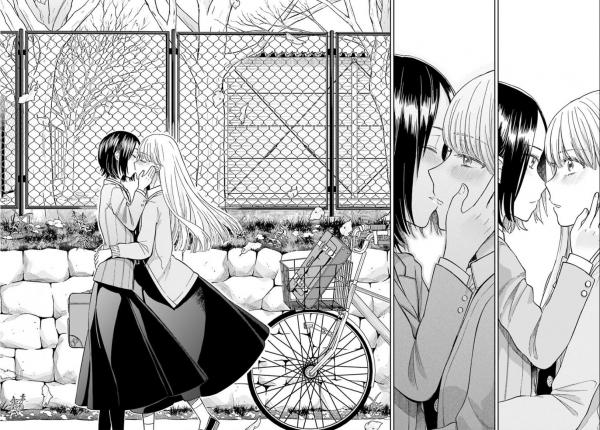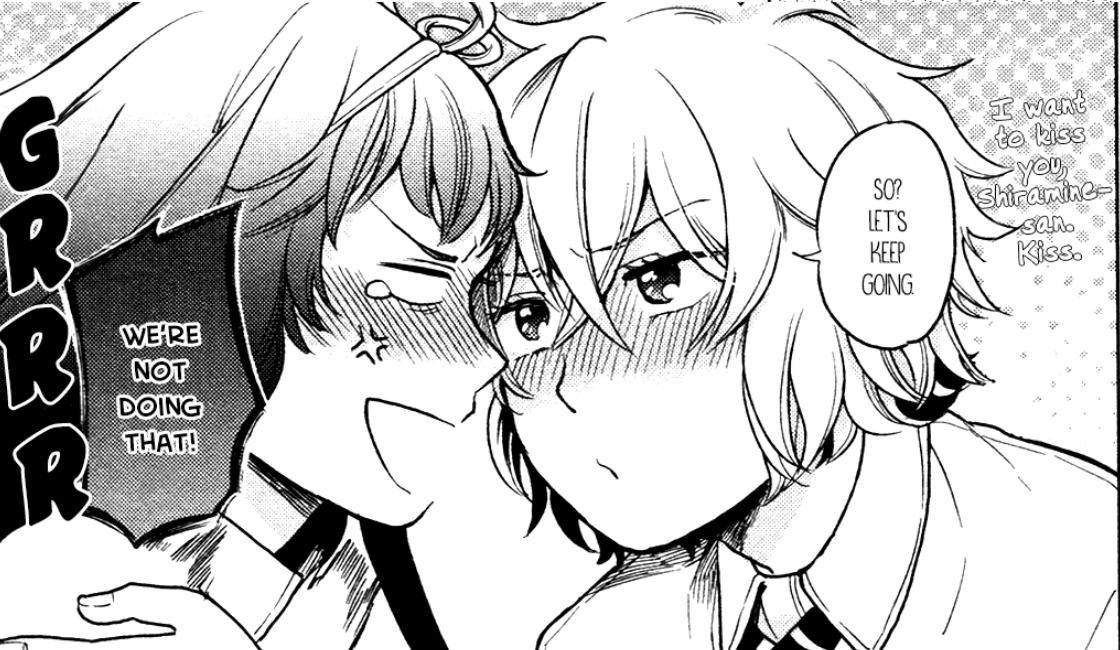This review of Ano Ko ni Kiss to Shirayuri wo dives into the tension between academic rivalry and forbidden romance at Seiran Academy. It explores the fiery dynamic between Ayaka Shiramine and Yurine Kurasawa, the manga’s blend of charm and toxicity, and the contrasting softer love stories that balance the narrative. Written after reading on ComicK, the review highlights both the strengths expressive art, dramatic tension, multiple subplots and the flaws, such as unhealthy relationship patterns that might trouble some readers.
When I picked up Ano Ko ni Kiss to Shirayuri wo on ComicK, I expected a lighthearted yuri school romance. What I found instead was a stormy mix of rivalry, obsession, and fleeting tenderness that left me both intrigued and unsettled. ComicK made the reading experience seamless the pages loaded crisp and fast but the story itself was far from smooth. It’s a manga that draws you in with its beautiful art and emotional highs while also daring you to question the relationships it portrays.
The Perfect Girl Meets Her Match
Ayaka Shiramine starts off as the perfect honor student always composed, admired, and effortlessly on top. She reminded me of the kind of classmate everyone both respected and envied. But her pedestal crumbles when Yurine Kurasawa, a lazy genius who naps through lectures, suddenly takes first place.
The tension between them is immediate and electrifying. Shiramine’s pride won’t allow her to accept second place, while Kurasawa seems amused by the competition. What begins as academic rivalry quickly turns into something more personal, more dangerous, and far more compelling than I expected.
For me, this setup worked brilliantly. It captures that bittersweet cocktail of admiration and envy we’ve all felt at some point. But it also made me brace myself because when rivalry turns into attraction, things rarely stay simple.

The Push and Pull of Rivalry and Romance
What kept me hooked was how quickly their battles in class spilled over into their personal lives. One moment, Kurasawa is casually dismantling Shiramine’s composure; the next, she’s stealing a kiss and declaring victory in a completely different arena.
I’ll admit I laughed, blushed, and winced all in the same chapter. There’s something magnetic about the unpredictability of their relationship. It’s messy, it’s intense, and it’s the kind of drama that makes you turn the page even when you’re muttering, “This is not going to end well.”
But here’s where I struggled: the romance sometimes feels more like domination than affection. The way Kurasawa exerts control over Shiramine, blurring the line between rivalry and obsession, had me questioning whether I should be rooting for them at all.
When Passion Turns Toxic
Let’s be honest: Kurasawa’s actions aren’t always romantic they’re often downright toxic. From physical aggression to obsessive behavior, she sets off all the red flags you’d warn a friend about in real life.
As a reader, I found myself conflicted. On one hand, the intensity makes the story thrilling, and I couldn’t look away. On the other, I kept thinking: if this were a real relationship, we’d be calling it unhealthy, maybe even dangerous.
That’s not to say the manga glamorizes abuse outright, but it walks a razor-thin line. It’s one of those stories where your enjoyment depends on whether you can accept fiction as fiction—or whether the imbalance of power ruins the romance for you.
Softer Side Stories That Bring Balance
Thankfully, the manga isn’t all fire and fury. Sprinkled between the storms are gentler romances that bring balance. The relationship between Mizuki, the “prince” of the academy, and Moe is particularly refreshing. Their love feels healthier, based on mutual respect and open communication.
These side stories gave me the breather I needed. They reminded me why I enjoy yuri in the first place the sweetness, the vulnerability, the thrill of small gestures. Compared to Kurasawa and Shiramine’s rollercoaster, they were like a warm cup of tea after a long day.
And honestly, without these subplots, I might have found the main couple’s intensity too overwhelming to stick with. It’s the contrast that makes the whole volume work.

The Art That Speaks Louder Than Words
Canno’s artwork is one of the manga’s greatest strengths. Expressions are exaggerated yet heartfelt eyes shrinking in anger, cheeks glowing in embarrassment, lips trembling before a kiss. You don’t just read the emotions; you feel them.
The contrast between Shiramine’s long, elegant hair and Kurasawa’s messy, short blond cut is a visual metaphor for their personalities: order versus chaos, control versus impulse. It’s clever, and it makes every panel pop with meaning.
At times, though, the dramatization veers into melodrama. There were scenes where I rolled my eyes at how over-the-top the gestures became. Still, I can’t deny the art carried the story even when the writing stumbled.
A Beautiful Mess of Love and Rivalry
So, would I recommend Ano Ko ni Kiss to Shirayuri wo? Absolutely but with caveats. It’s not your typical fluffy yuri. It’s messy, it’s dramatic, and parts of it might even make you uncomfortable. But that’s also what makes it memorable.
Reading it on ComicK was a pleasuren the site’s smooth interface let me get lost in the story without distraction. By the end, I found myself torn: I admired the boldness of portraying love as something dangerous and complicated, but I also wished the narrative addressed its toxicity more clearly.
If you’re looking for a yuri manga that challenges the line between rivalry and romance, sweetness and obsession, this is one you won’t forget. Just don’t expect it to leave you with only warm, fuzzy feelings.
